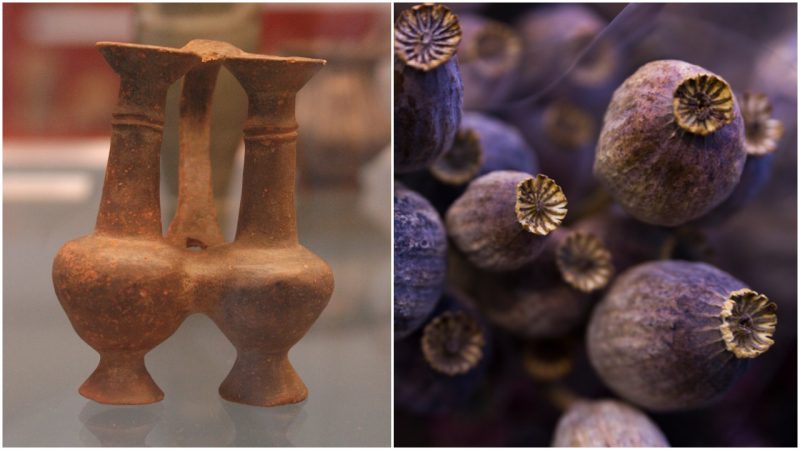Many of us realize that opium has been around for a long time, but just how long is somewhat startling.
A 3,000-year-old “juglet,” a small ringed vase, which was originally found in the eastern Mediterranean and kept in the British Museum contains traces of opium, according to a study released in October 2018.
The Bronze Age containers were widely traded in the eastern Mediterranean around 1650 BC to 1350 BC.
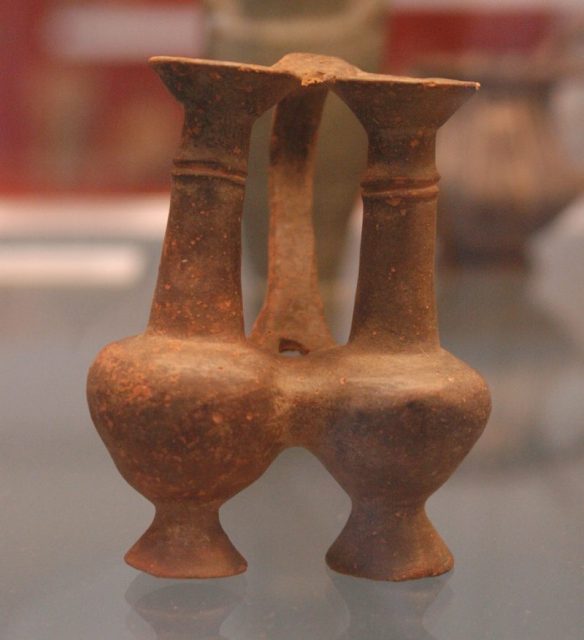
“Analysis of the alkaloid extracts … detected the five primary opium alkaloids in fresh poppyseed oil and papaverine in most of the aged samples,” according to the paper published in the journal Analyst. “Papaverine and thebaine were detected in the juglet residue, providing the first rigorous chemical evidence to support a link between this vessel type and opium, or at least poppies.”
Why were scientists even looking for opium traces in the juglet? Because they’ve long suspected its use due to the fact that when you turn the juglet upside down, the container resembles the head of opium poppies.
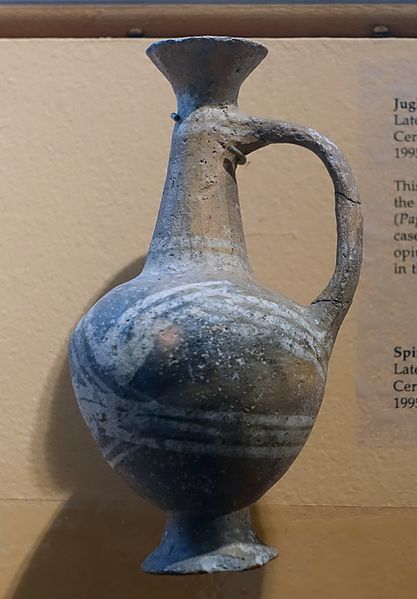
“The design of the base ringed juglet is believed to have been a form of bronze-age branding for commercial purposes,” wrote The Independent.
Researchers from University of York and the British Museum used various analytical techniques to provide this evidence that the vessels did in fact contain opium.
The juglet from the British Museum that they studied had been sealed. “This meant that there was a rare opportunity for scientists to investigate what components might have survived,” researchers said in a statement.
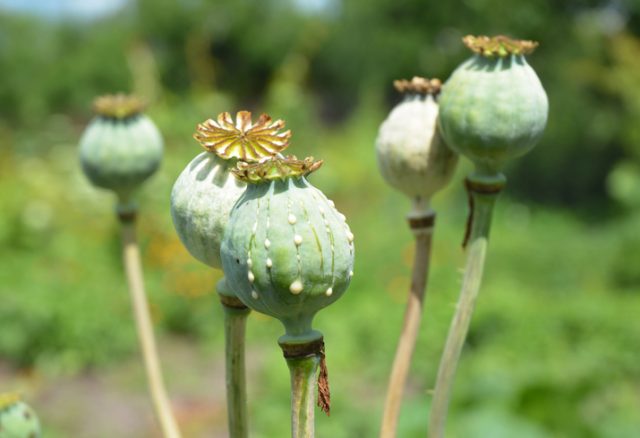
British Museum officials seem unconvinced that the container necessarily belonged to a hardcore Bronze Age drug dealer. The opium alkaloids were detected in a residue of degraded plant oil, officials said. This could mean that the juglet held poppyseed oil rather than pure opium.
The discovery of the oil “implies that the substance was not consumed as a narcotic but instead used for anointing or perfumery in which the psychoactive properties of the opium ingredient might only have symbolic significance,” the museum said.
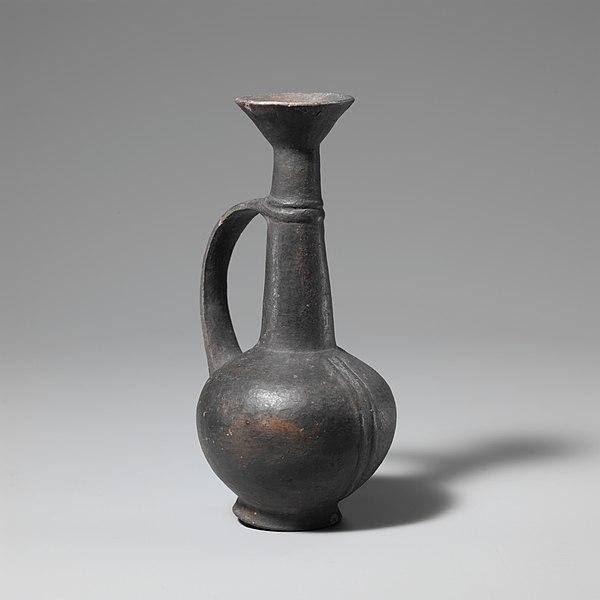
Professor Jane Thomas-Oates, Chair of Analytical Science in the Department of Chemistry, and supervisor of the study at the University of York, said: “The juglet is significant in revealing important details about trade and the culture of the period, so it was important to us to try and progress the debate about what it might have been used for.”
“We were able to establish a rigorous method for detecting opiates in this kind of residue, but the next analytical challenge is to see if we can succeed with less well-preserved residues,” said Professor Thomas-Oates.
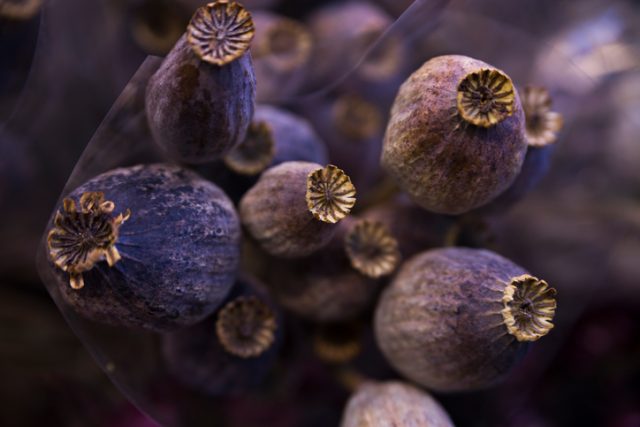
This is the first time that reliable chemical evidence has been produced to link the opium poppy with a base-ring juglet, despite many attempts by researchers over the years.
While this may seem like the earliest proven use of such a drug, it is not.
According to Live Science, opium, “magic” mushrooms, and other psychoactive substances have been used since prehistoric times all over the world, according to a separate review of archaeological findings.
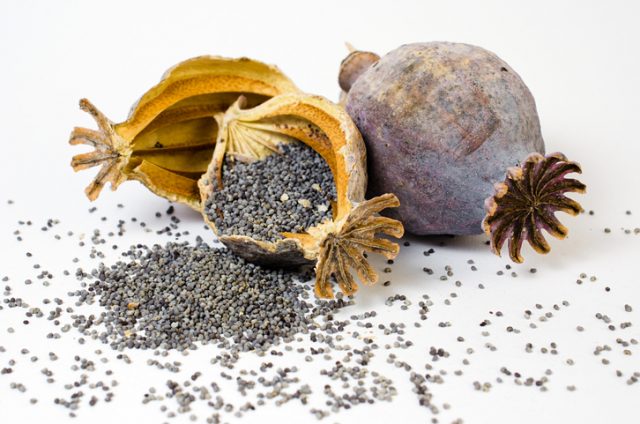
The evidence shows that people have been consuming psychoactive substances for centuries, or even millennia, in many regions, said Elisa Guerra-Doce, an associate professor of prehistory at the University of Valladolid in Spain, who wrote the review.
These days, San Pedro cactus, containing chemicals with hallucinogenic properties, is used in healing ceremonies by people living in the Andean mountains of South America, primarily in northern Peru, according to Guerra-Doce’s paper. But the earliest evidence of San Pedro cactus use was discovered in Guitarrero Cave, in Peru’s Callejón de Huaylas valley, Live Science reported.
Researchers found pollen and traces of the cactus in the parts of the cave that were occupied the earliest, which date back to between 8600 BC and 5600 BC.
Read another story from us: Iron Age Gold and Treasure Found by Dental Assistant in a Muddy Field
Other evidence shows that a larger sample of material from the cactus found in the cave dated back to 6800-6200 BC, according to the paper.
